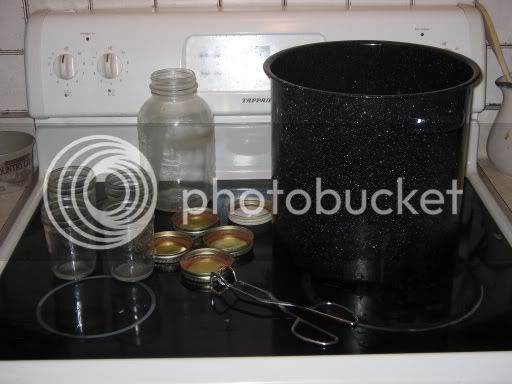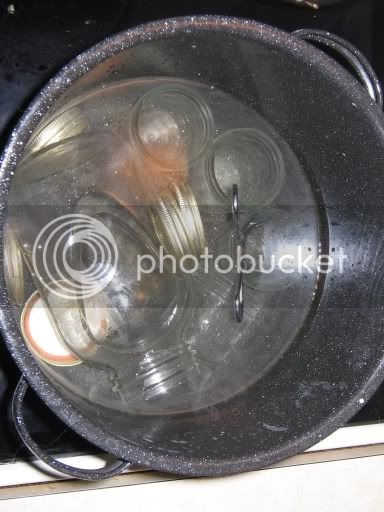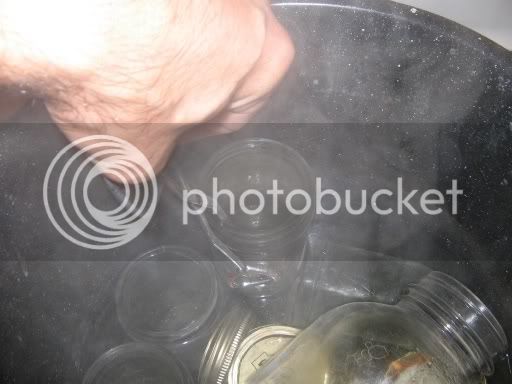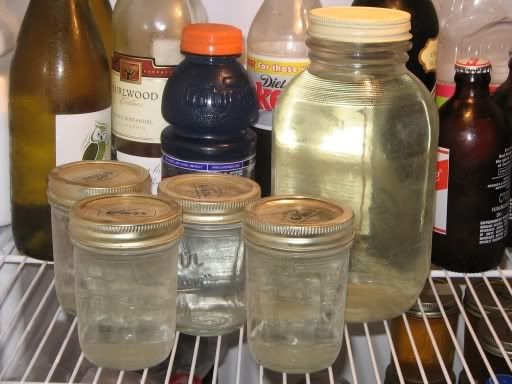Bernie Brewer
Grouchy Old Fart
I usually make my starters about 1400ml at a gravity of 1.040. That is plenty for me for a 10-gallon batch.

Bernie Brewer said:I usually make my starters about 1400ml at a gravity of 1.040. That is plenty for me for a 10-gallon batch.

I think this was a type-o the yeast in the secondary are less flocculant than the yeast in the primary. Palmer recomends using the yeast from the primary if you're goin to save it for several generations, but he says that if you're only going to save it for 1 or 2 generations, than the yeast from the secondary is easier to clean.delboy said:I thought it was the opposite, that yeast in the primary yeast cake are the flocculant ones and those still in solution which are in the secondary are less flocculant (that would make sense to me).
hellfireSam said:ooook
thank you!
fixed this in wiki as wellBernie Brewer said:You're right, that was a bit confusing, but you assumed correctly. Thanks for clearing that up.
explosivebeer said:I assume that's due to the large amount of yeast I started with. Does that mean I should split my next yeast cake into ten bottles instead of five?
Another question that comes to mind is how many generations is yeast usually good for? Should I harvest the yeast cake from this rapidly fermenting batch? Or just use the rest of my second-generation bottles when the appropriate batch calls for them and start anew after that?
Thanks for any insights you can provide.
rabidgerbil said:As to splitting it into more bottles, your whole point of doing this is to get a good strong fast fermentation, and if you are getting five more batches out of the previous batch, you are getting a good return on your money, so why bother?
explosivebeer said:Logistically, I guess I don't really want my fridge filled with ten bottles of every yeast strain I try.
explosivebeer said:Logistically, I guess I don't really want my fridge filled with ten bottles of every yeast strain I try. I was just curious if there was a minimum amount of yeast you'd want in each container. As it is, I think I'll have more than enough with my current process.
If I find some smaller, stackable containers I might split my batches up a bit more but for now I'm happy to have seemingly learned how to wash and store yeast!
Thanks again to the OP.



Indeed!!!!!!!!!cowgo said:That's just a beautiful picture!
So just to check - when you come to use these yeasties, the stuff you want is on the bottom, right? And you'd get rid of the liquid at the top?SuperiorBrew said:
Danek said:So just to check - when you come to use these yeasties, the stuff you want is on the bottom, right? And you'd get rid of the liquid at the top?

splat said:Ok, just a couple of quick questions.... I have wanted to try this for a while to save money on batches, and Im brewing this weekend, so in about a week or so Im giving it a go...
First question. After you pour your cooled/boiled water into your primary and shake it up do you pour it into your large jar, or siphon it in?
After it settles a little bit in the large jar, do you pour it into the smaller jars/or siphon it... I think it said to try and leave the bottom layer without disturbing it,,,,,I guess that is what makes me think you are going to siphon it...
Oh, one last thing....I end up with a LOT of Trub in the bottom of my primary....I was wondering if that is ok to still wash yeast from....I strain from kettle to primary through a stainless strainer, but there is still an inch or so of trub after a week.... I have heard of guys whirlpooling their wort in the brew kettle before siphoning it into the primary, would this help the trub issue, and make it easier to wash the yeast?
Thanks in advance for the help...
GlassblowersBrew said:I have some serious noob questions. If I want to use my yeast cake from my secondary to immediately brew my next batch of beer, can I pour the yeast cake back into my primary? If I can, should I do that before or after I pour in my wort? I looked through this thread and didn't find anything. Also, how many times can you use the same strain of yeast while using the yeast cake method? (I am using extract brewing). Thanks.
.Bernie Brewer said:Richard, if you are going to repitch onto a yeast cake, don't add the water, just put the wort on top of the cake
Bombo80 said:I was having trouble getting it to siphon, so I just used my turkey baster to transfer the yeasties from jar to jar. Yeah, I know it was dumb on my part, but I got it done, and I think it turned out very nice. I need to get something else setup to transfer the yeast from jar to jar.
Very nice illustration on how to wash yeast. I don't go as far as you are but I usually am re pitching with in 2 weeks of the last brew. I also make a starter from the washed yeast. I'll keep washing the 5 different yeast strains and brewing beer till about the end of April. Next year I'll start with new Wyeast Activator packs and start all over again.Bernie Brewer said:It seems to me that there have been quite a few inquiries about yeast washing lately, so since I was racking/washing today, I grabbed the digital camera to illustrate one way of doing it. I have had great success with this method, so I thought I'd share. Here goes:
The only materials that I use besides regular racking equipment is this:
4 pint sized Mason jars w/lids
1 larger container for extra water
1 kitchen tongs
My old boiling kettle from my original brewing kit.

I put all the stuff- lids and all- in the pot and add enough water to cover it:

Boil it for about 20 minutes or so. This will sanitize everything as well as get rid of any oxygen in the water, so the yeasties will take a nice long nap. Then remove the jars and lids with the tongs, keeping them full of water.

Cover all the jars and let cool in the fridge for several hours, or maybe overnight.

Even though it's been over half a week since I washed my yeast there's been something gnawing at the back of my mind. I couldn't find mason jars so I cleaned out a couple of salsa jars. Bear in mind I scrubbed them hard with hot water and bleach dish soap. Then I boiled some water and put it in side, to the brim to let it sterilize them.SuperiorBrew said:I think Bernie has used some up to about a year, but he said it took a while to get his starter going on that one.
If you want to freeze them and keep for years then you need to add glycerine and do it like descrigbed here: Guide to Making a Frozen Yeast Bank
EinGutesBier said:Even though it's been over half a week since I washed my yeast there's been something gnawing at the back of my mind. I couldn't find mason jars so I cleaned out a couple of salsa jars. Bear in mind I scrubbed them hard with hot water and bleach dish soap. Then I boiled some water and put it in side, to the brim to let it sterilize them.
Now before I get any responses of "what the heck were you thinking?!" I want to add that I'm okay if this doesn't work out right. I consider it practice if nothing else. But what I would like to know is if, despite cleaning and sanitizing the jars very thoroughly, will that slight salsa aroma ruin the yeast? I'm concerned that if I did use the yeast, assuming the starter works, that it'll leave salsa off-flavors in the beer. Am I worrying over nothing?
Yeah, I'll have to invest in some jars from Walmart. The funny thing is, the jars themselves didn't smell of salsa...and I made sure there was zero residue, so that's not an issue. However, the plasti-rubber linings on the lids are what smelled of salsa. I figure if I make a starter out of them, the yeast will sort of "burn off" any remainder of the salsa odor.Warped04 said:I'm no expert....and I don't want to derail you expierementation (which I admire), but I'm going to say if it was me, I wouldn't use salsa jars....if there is a smell, there are remants IMO....Now if it works...W O O T Salsa Beer!
But I'd head down to walmart and spend the $10-$15 on 1/2 pint mason jars (or whatever size you desire) to be sure that you are ok...You can use them for other stuff as well.
Enter your email address to join: